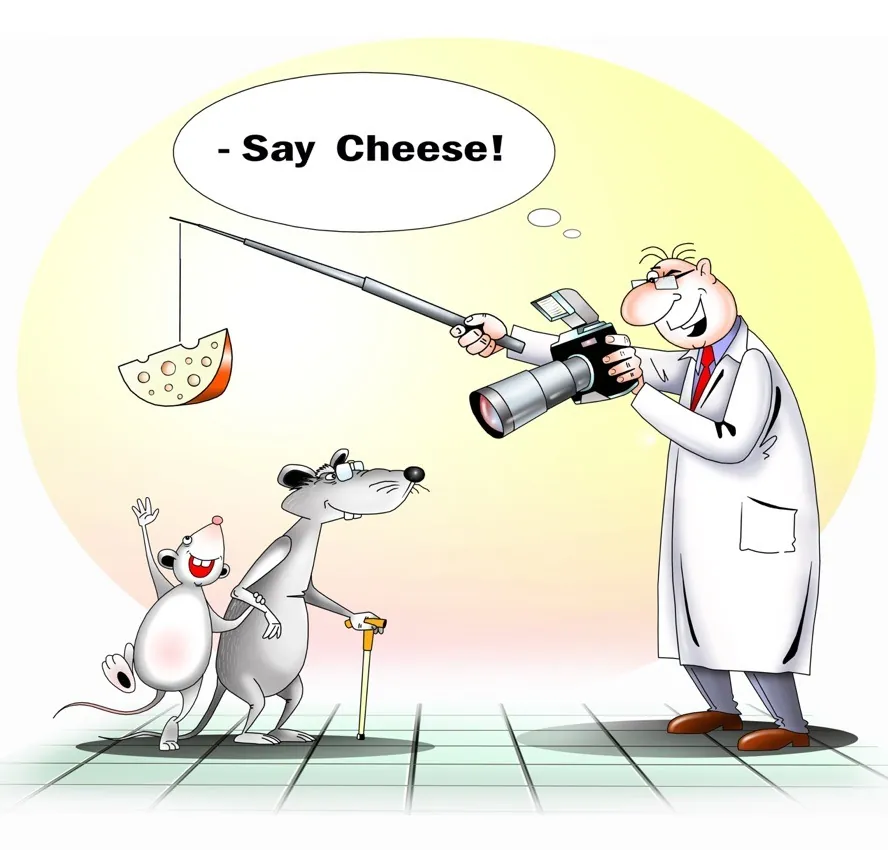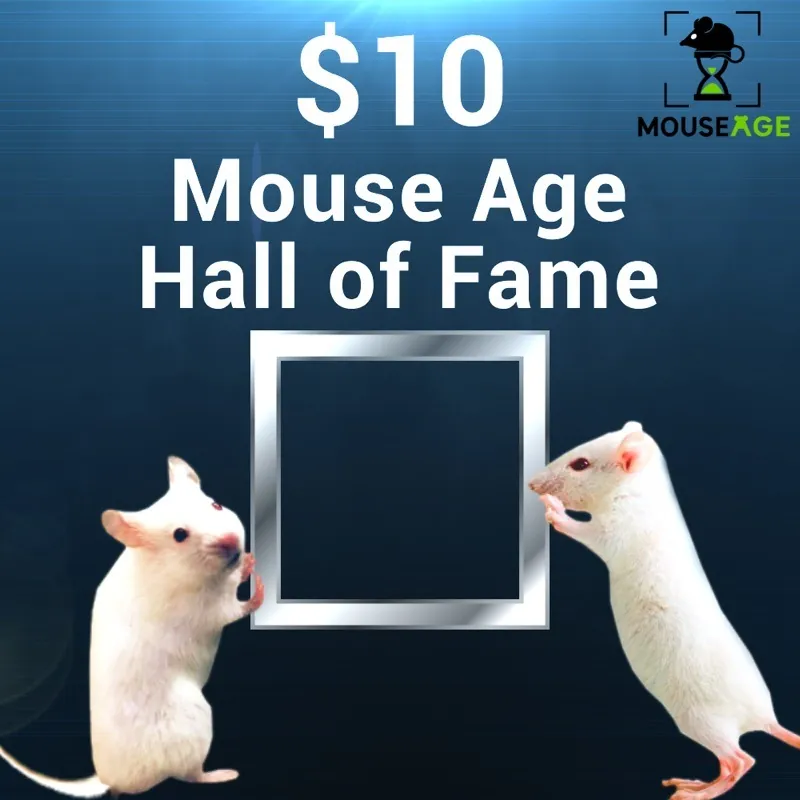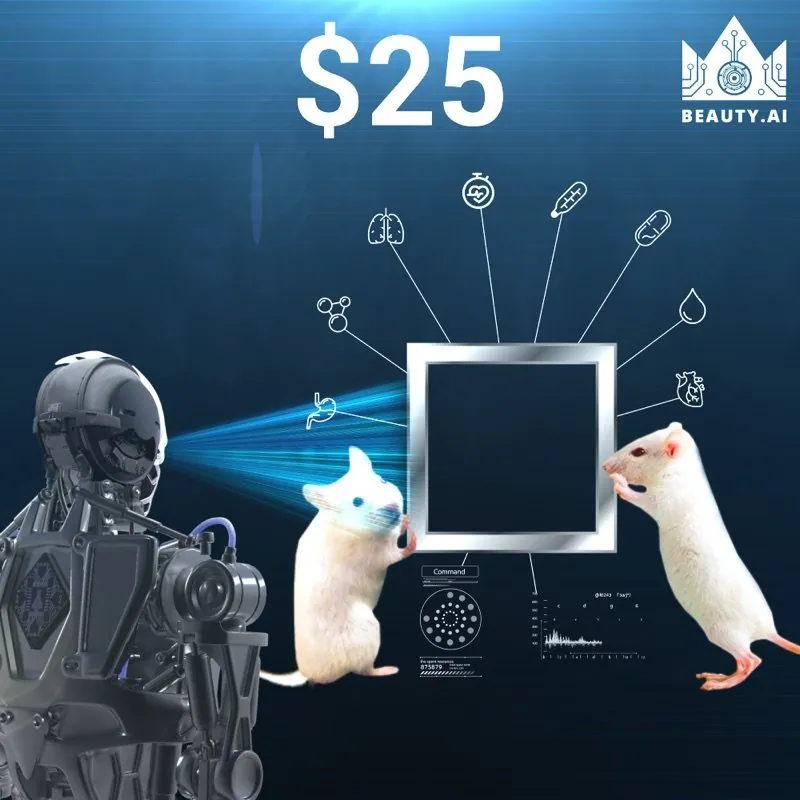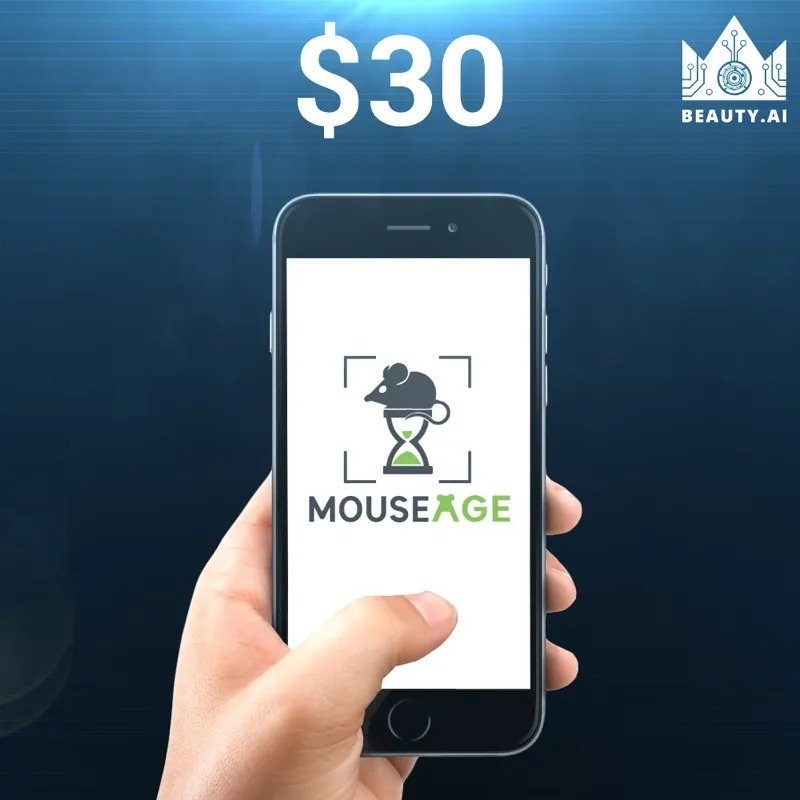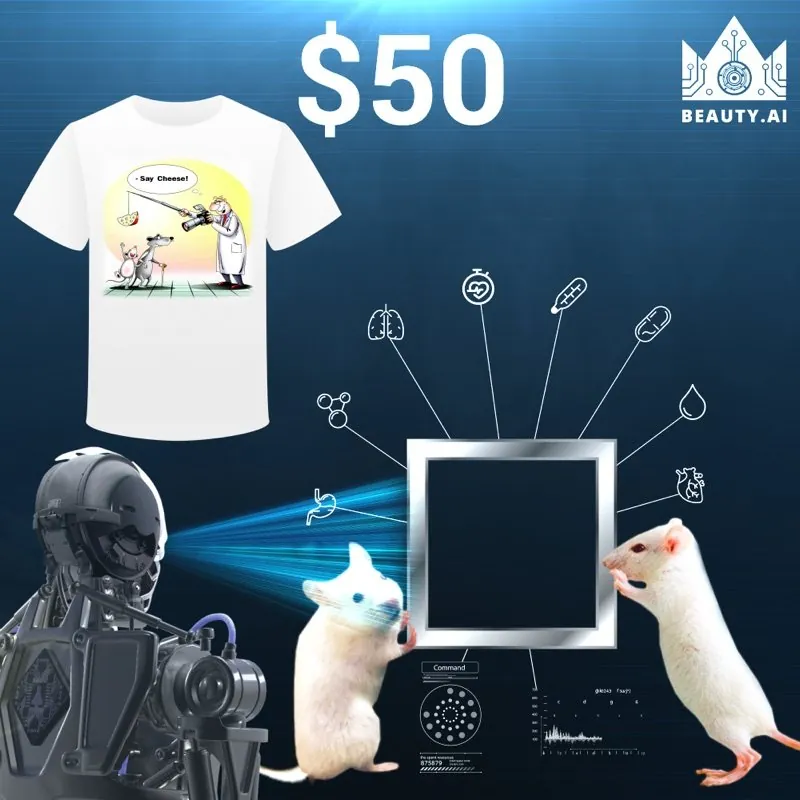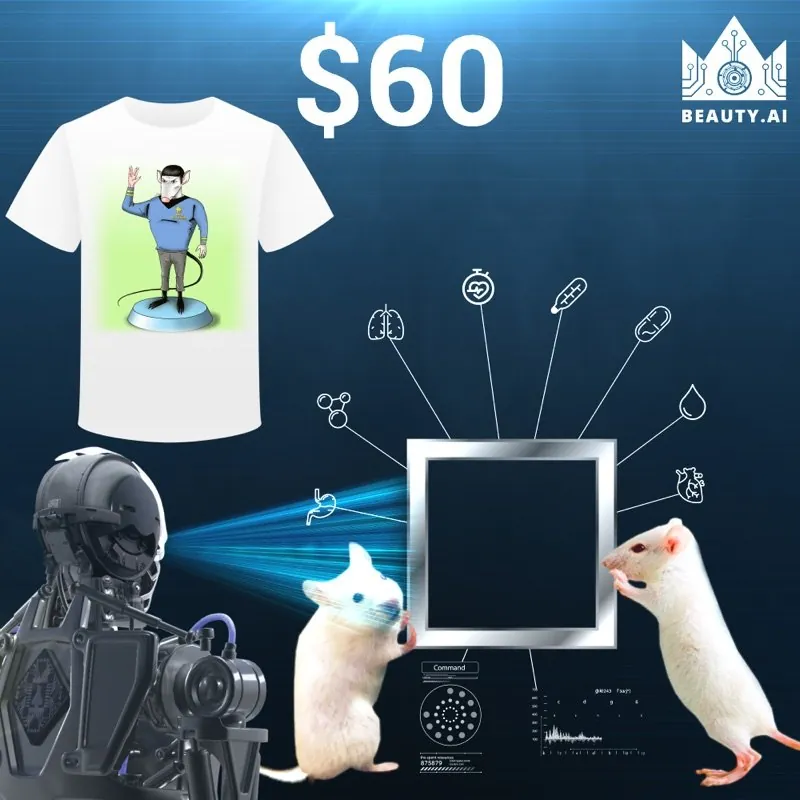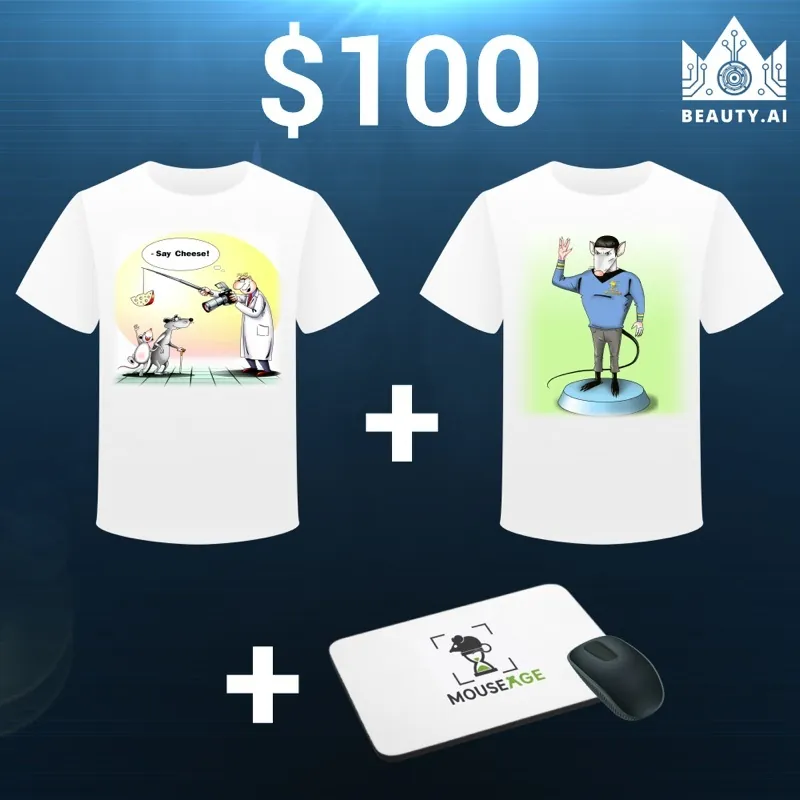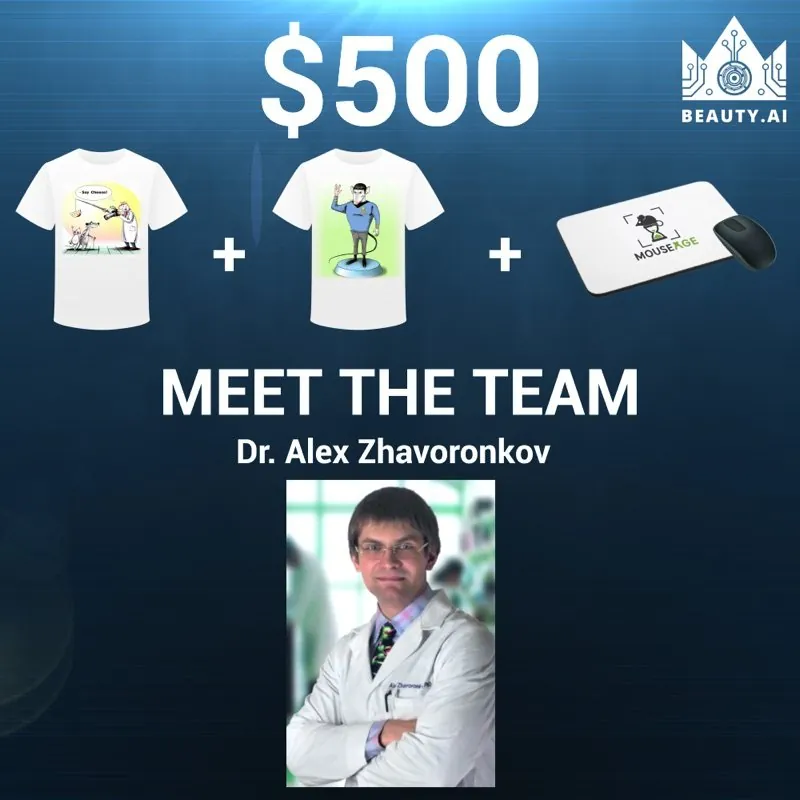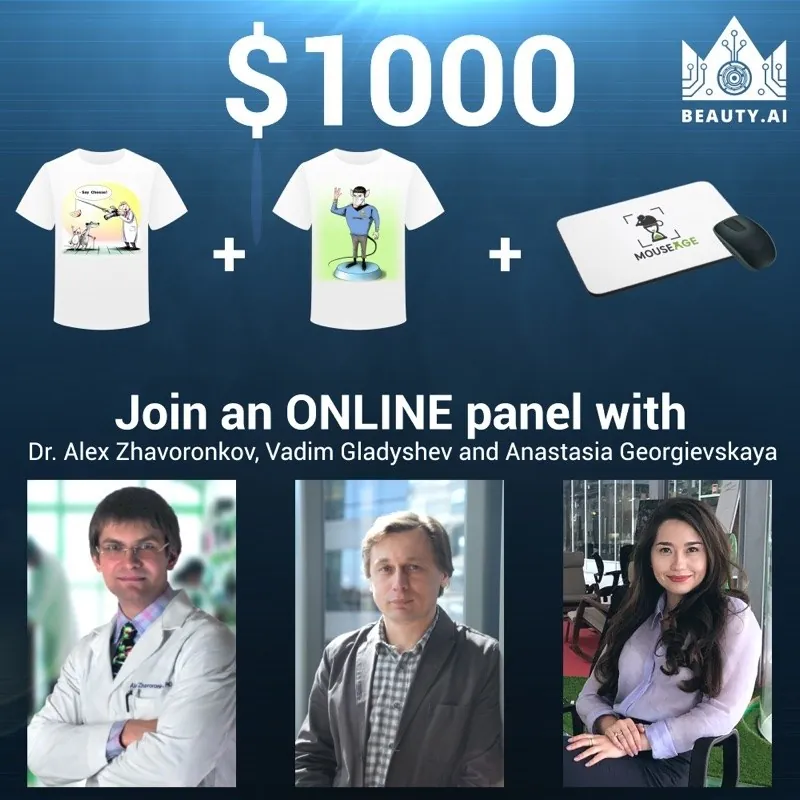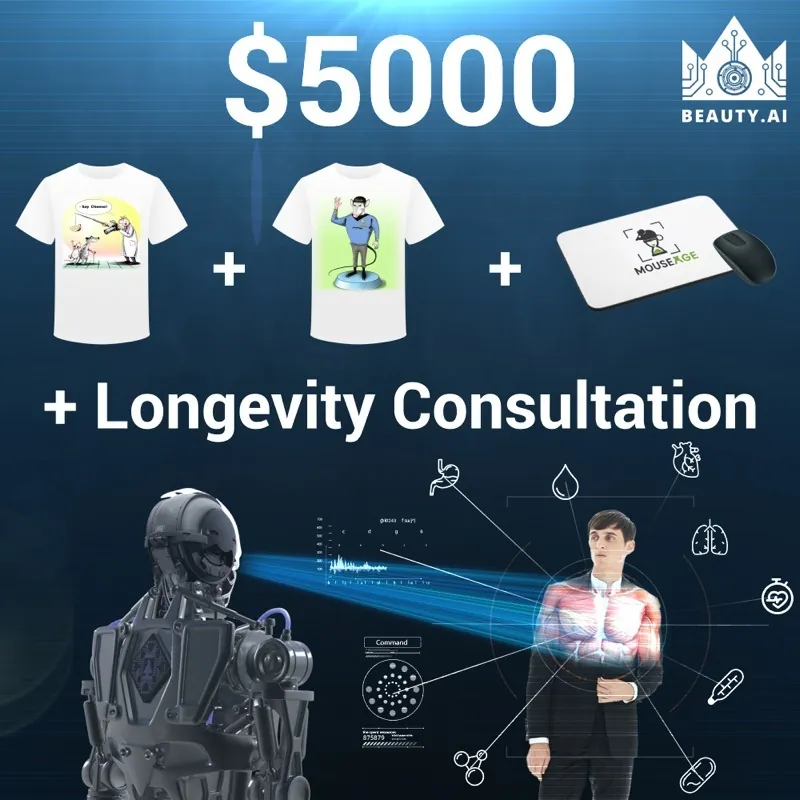|
NOTE: Due to some exciting updates this campaign now has a new goal amount and all donations up to the new initial goal will be matched This means that donated up to that goal will be doubled!
————————————————————————————————————
Here at MouseAGE we are aiming to create an artificial intelligence-powered research tool to help scientists accurately determine the biological age of mice and test longevity interventions based on photographic images of mice. This will introduce the first visual biomarker for aging in mice, and will help validate potential anti-aging interventions, save animal lives, and greatly speed up the pace of longevity research.
Looking at a person, we can estimate his/her age and even tell something about their health based on skin tone, pigmentation and elasticity, hair graying and other parameters. A person’s appearance can provide an important clue for a doctor.
When it comes to mice, however, the human eye cannot define subtle changes in the appearance of such a tiny animal with enough accuracy, and this is where modern technologies can help.
By using machine learning combined with visual recognition, MouseAGE will learn to recognize mice from images, to define their body parts, and finally to detect the subtle visual biomarkers of aging. Detailed analysis of this data and detection of how it correlates with other biological phenomena will then allow researchers to assess potential anti-aging interventions at an early stage of the experiment and in a much less invasive way. This approach works for humans, and we think it will work for mice as well.
We also hope that because MouseAGE will help scientists collect important data faster it can also reduce the number of animals required for experimentation and avoiding unnecessary animal suffering. Let’s use the capacities of artificial intelligence to accelerate rejuvenation research, make it more effective, and help achieve healthy aging in both mice and humans!
Will you help us make the world a better place for both humans and mice?

| So how exactly it is going to work? |
Let the mouse selfie festival begin! To rapidly collect data commercial mouse breeders, research labs, and our beta testers all over the world will take and upload many mouse photos to our cloud-based service. At this stage of the project we will be collecting the pictures of normally aging mice in order to establish a baseline of what aging looks like in mice.
We have chosen to start with the C57BL/6 (the black 6) mouse strain. This is the most common lab mouse globally, so it makes sense to begin here. Collected images at this stage will total approximately 10,000, including a wide age range of the black 6 mouse – this estimate based on our earlier experience with human faces. Once we have enough photographic material, artificial intelligence training will begin.
We will teach our system to recognize mice in images (we are sure it will soon be better at this than a cat!) using visual recognition, then how to identify different body parts (head, tummy, paws and tails) as well as other aspects of mouse appearance.
The next step will be to build an application for mouse age assessment using deep learning techniques like neural networks. Neural networks have multiple layers, each of them responsible for recognition of a particular feature. Eventually we will uncover the features that contribute the most to age prediction. These features can then be selected as potential biomarkers, and we will test them on large amounts of mouse image data to validate them prior to their application in longevity studies.
We will evaluate the application’s accuracy with standard metrics such as Mean Absolute Error and Root Mean Squared Error (MAE, RMSE), aiming for an initial MAE of 3 months or better (accuracy of age prediction is +- 3 months). One example of MAE for comparison is that of Horvath’s Epigenetic Clock of aging in humans, with an MAE of ~2.7 years. It is also important to note the application will continue to improve in accuracy as training data continues to increase over time.
 |
 |
 |
This easy-to-use platform for researchers, based on deep learning principles, can potentially revolutionize fundamental studies on aging, helping to translate promising therapies to people sooner. Just imagine: once the first version of MouseAGE is developed, it will be very easy to analyze how mice are aging compared to baseline in response to interventions, providing researchers all over the world with precious data collected in a more humane way.
Instead of waiting for years and testing large numbers of mice, MouseAGE will allow rapid testing of candidate longevity interventions to determine which treatments, lifestyle factors, and diets make mice look younger than their actual age. This will give scientists all over the world a great tool to accelerate their research and hopefully one day apply the identified interventions to humans as well!
 |
 |
 |
Not only that but the initial publications from this technology will be open access, available for all to benefit from in the spirit of sharing scientific knowledge.
Doesn’t that sound great? We think it does, and with your help MouseAGE can start a true revolution!
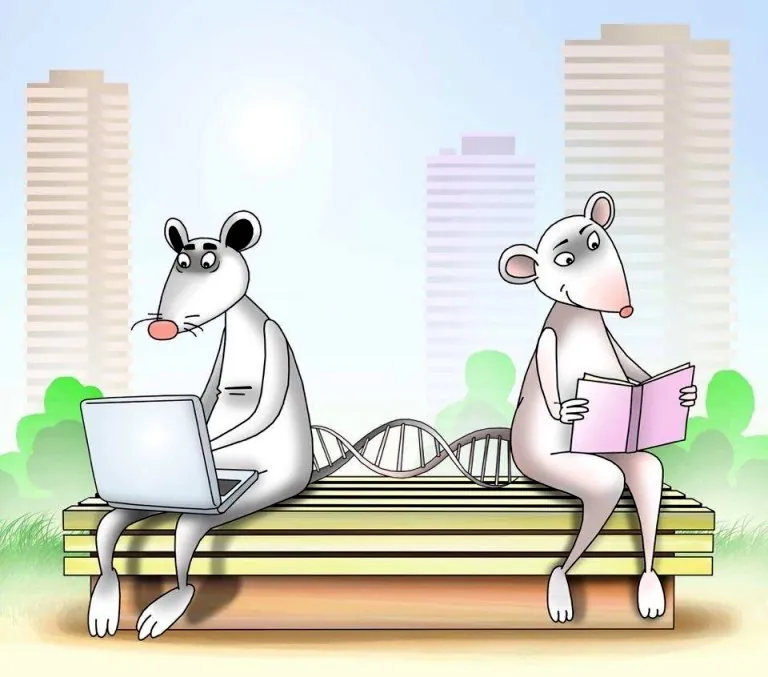
Additional Citations:
- Rothe R, Timofte R, Van Gool L. Deep expectation of real and apparent age from a single image without facial landmarks. International Journal of Computer Vision. 2016:1-4.
- Han H, Otto C, Jain AK. Age estimation from face images: Human vs. machine performance. In Biometrics (ICB), 2013 International Conference on 2013 Jun 4 (pp. 1-8). IEEE.
- Fu Y, Guo G, Huang TS. Age synthesis and estimation via faces: A survey. IEEE transactions on pattern analysis and machine intelligence. 2010 Nov;32(11):1955-76.
- Phillips P, Moon H, Rizvi SA, Rauss PJ. The FERET evaluation methodology for face-recognition algorithms. In IEEE Transactions on pattern analysis and machine intelligence, 2000; 22(10):1090-1104.

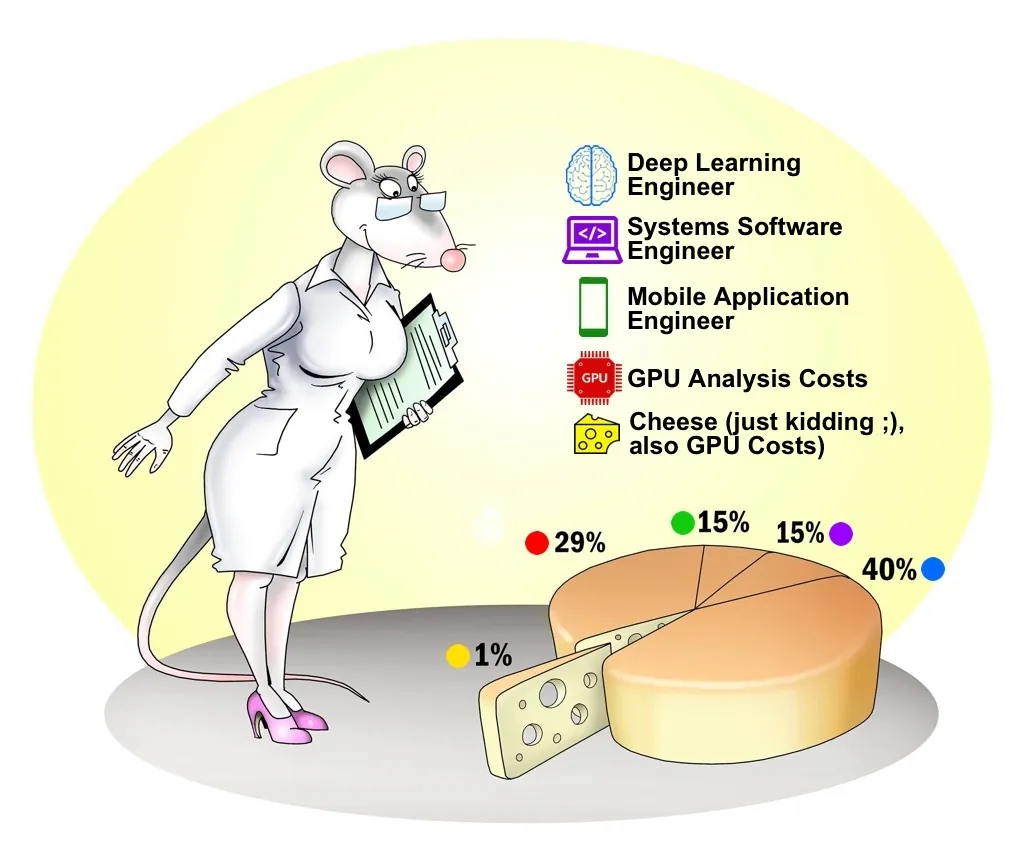
|

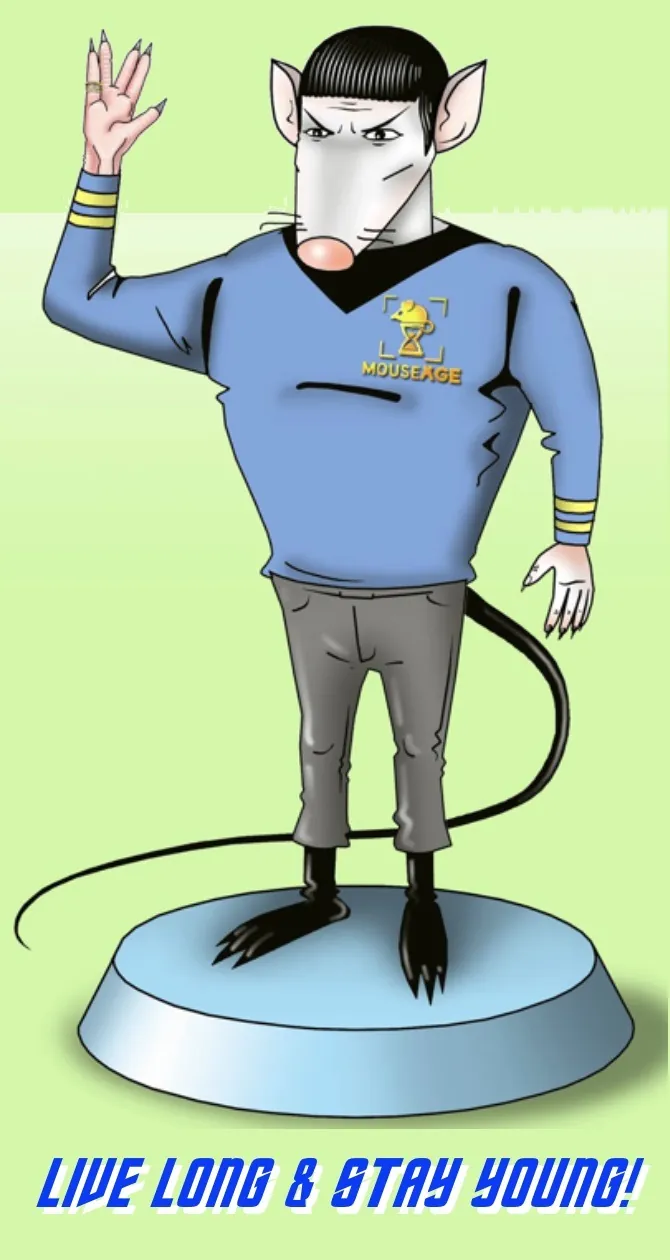
$15,000: Initial Goal – MouseAge System development
Our primary goal is to develop the MouseAGE system so that researchers can benefit from it. This will be an application that can be installed on a personal smartphone to make, annotate, and upload images to our cloud-based system for analysis, as well as be able to perform age assessment on newly taken images.
The cost includes this data collection tool for researchers, mouse recognition software and the creation of an accurate, deep-learned, mouse age assessment algorithm. This will utilize feature extraction techniques to identify visual biomarkers of mouse aging, which we want to have thoroughly tested and made available for widespread use in common lab practice.
The MouseAge system will be made available first as an iPhone application, and be distributed for free.
$35,000: Stretch goal – Include More Model Organism via Transfer Learning
If the initial assessment algorithm proves successful for black 6 mice, the MouseAge team will attempt to create similar assessments for other mice strains, rats, rabbits, and hopefully human beings as well. Doing so will serve to verify the biological relevance of our chosen biomarkers while also broadening the utility of the MouseAge system as a research tool. We will begin this process by adding the BALB/c mouse strain, as well as rat strains such as Wistar and Sprague Dawle, which are other commonly used lab animals.
This involves a technique called Transfer Learning – a machine learning approach that focuses on storing knowledge gained while solving one problem and applying it to a different but similar problem.

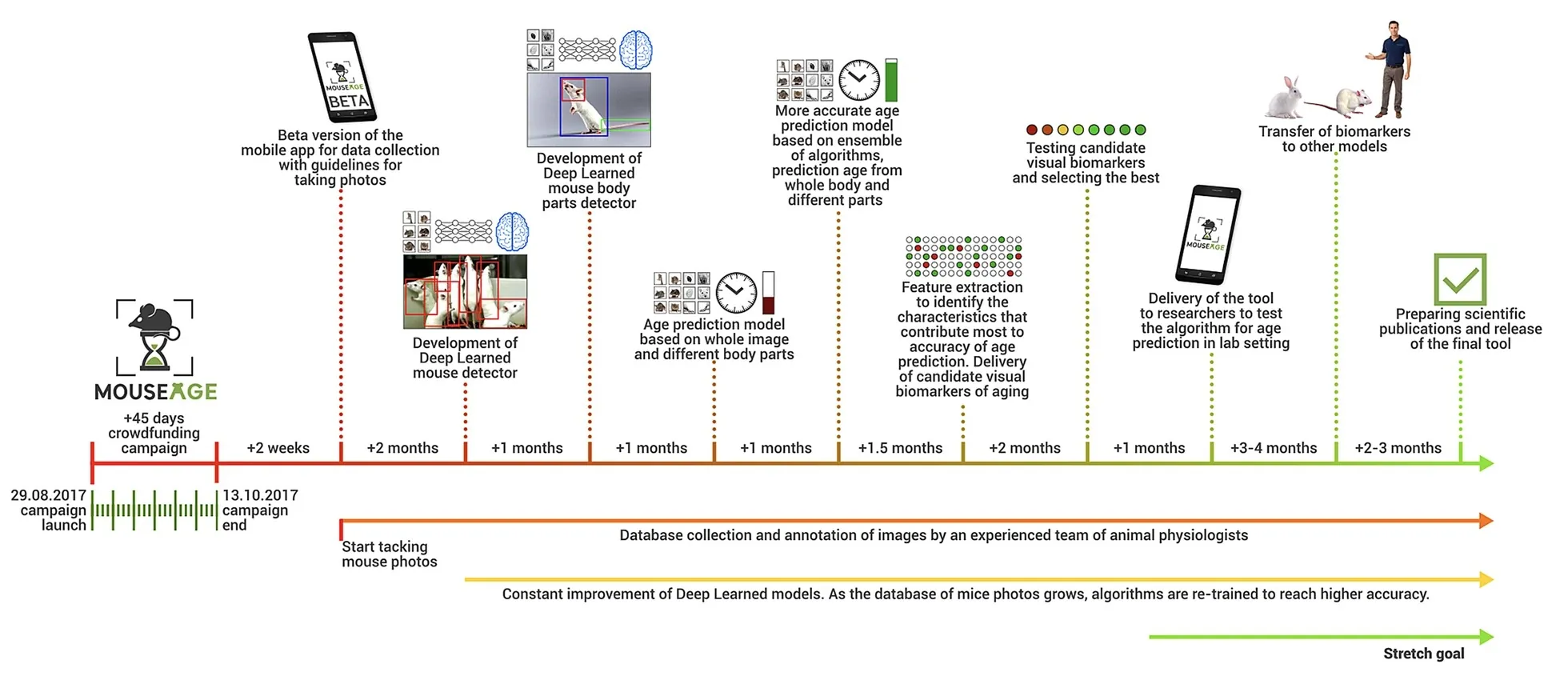 |
[click-to-enlarge]
|
If successfully funded, we will develop the data collection tool so that it is available as a free mobile application by mid-October 2017. This will allow users to begin collecting images and send them to the database.
We will work to collect enough data by February 2018, and will then implement our algorithm for mouse age assessment by April 2018. This biomarker system will then be made available as a free application shortly afterwards.

Project Leader 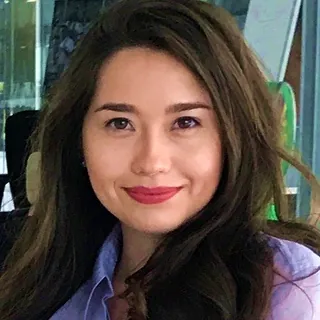 Anastasia Georgievskaya is the co-founder and general manager at Youth Laboratories, a company developing tools to study aging and discover effective anti-aging interventions using advances in machine vision and artificial intelligence. The primary goal of Youth Laboratories is to use facial imaging data to predict the health status of patients to help them stay as healthy and young for as long as possible. Anastasia has a degree in bioengineering and bioinformatics from Moscow State University. She has won numerous math and bioinformatics competitions and successfully volunteered for some of the most prestigious companies in aging research, including Insilico Medicine. She also presented and chaired a panel at Re-Work Deep Learning in Healthcare Summit in London. Anastasia Georgievskaya is the co-founder and general manager at Youth Laboratories, a company developing tools to study aging and discover effective anti-aging interventions using advances in machine vision and artificial intelligence. The primary goal of Youth Laboratories is to use facial imaging data to predict the health status of patients to help them stay as healthy and young for as long as possible. Anastasia has a degree in bioengineering and bioinformatics from Moscow State University. She has won numerous math and bioinformatics competitions and successfully volunteered for some of the most prestigious companies in aging research, including Insilico Medicine. She also presented and chaired a panel at Re-Work Deep Learning in Healthcare Summit in London. |
||
Research Lead  Vadim Gladyshev is a Professor of Medicine at Brigham and Women’s Hospital, Harvard Medical School, and an Associate Member of the Broad Institute. He is also Director of the Center for Redox Medicine. Dr. Gladyshev’s lab applies high-throughput and computational approaches to understand the mechanisms of aging, control of lifespan, and the redox regulation of cellular processes. His lab recently developed biomarkers of mouse aging based on blood DNA methylation patterns. Dr. Gladyshev has published approximately 300 articles and has been elected as an AAAS fellow. He is a 2013 recipient of the NIH Director’s Pioneer Award to study the mechanisms of longevity. Vadim Gladyshev is a Professor of Medicine at Brigham and Women’s Hospital, Harvard Medical School, and an Associate Member of the Broad Institute. He is also Director of the Center for Redox Medicine. Dr. Gladyshev’s lab applies high-throughput and computational approaches to understand the mechanisms of aging, control of lifespan, and the redox regulation of cellular processes. His lab recently developed biomarkers of mouse aging based on blood DNA methylation patterns. Dr. Gladyshev has published approximately 300 articles and has been elected as an AAAS fellow. He is a 2013 recipient of the NIH Director’s Pioneer Award to study the mechanisms of longevity. |
||
Research co-lead 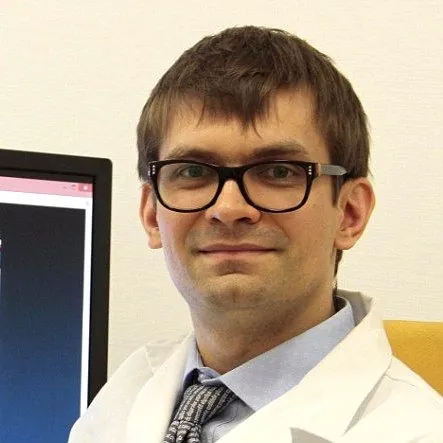 Alexander Zhavoronkov, PhD, is the Chief Executive Officer of Insilico Medicine, Inc, a Baltimore-based company applying the latest advances in artificial intelligence to drug discovery, biomarker development, and aging research. He holds two Bachelor Degrees from Queen’s University, a Masters in Biotechnology from Johns Hopkins University, and a PhD in Biophysics from the Moscow State University. Alexander is the Chief Scientific Officer of the Biogerontology Research Foundation, a UK-based registered charity supporting aging research worldwide. He is also the director of the International Aging Research Portfolio (IARP) knowledge management project, chief scientist of Youth Laboratories and an adjunct professor at the Moscow Institute of Physics and Technology. Prior to switching his focus to aging research in 2004, he worked as the director of ATI Technologies, a major Canadian GPU company, and was the co-founder of and CSO of NeuroG, a neuroinformatics company. Alex Zhavoronkov is the author of over 90 research publications in peer-reviewed journals. He wrote several books: “The Ageless Generation: How advances in biomedicine will transform the global economy” (Palgrave Macmillan, 2013) and “Dating AI: A Guide to Falling in Love with Artificial Intelligence” (RE/Search, 2012). Alex is the editor of numerous journals, including aging, Oncotarget: Gerotarget, Frontiers in Genetics, and Frontiers in Molecular Biosciences. He also is co-organizing the annual Aging and Drug Discovery Forum and the annual Artificial Intelligence & Blockchain for Healthcare Forum in Basel, Switzerland, as part of EMBO/Basel Life congress. Alexander Zhavoronkov, PhD, is the Chief Executive Officer of Insilico Medicine, Inc, a Baltimore-based company applying the latest advances in artificial intelligence to drug discovery, biomarker development, and aging research. He holds two Bachelor Degrees from Queen’s University, a Masters in Biotechnology from Johns Hopkins University, and a PhD in Biophysics from the Moscow State University. Alexander is the Chief Scientific Officer of the Biogerontology Research Foundation, a UK-based registered charity supporting aging research worldwide. He is also the director of the International Aging Research Portfolio (IARP) knowledge management project, chief scientist of Youth Laboratories and an adjunct professor at the Moscow Institute of Physics and Technology. Prior to switching his focus to aging research in 2004, he worked as the director of ATI Technologies, a major Canadian GPU company, and was the co-founder of and CSO of NeuroG, a neuroinformatics company. Alex Zhavoronkov is the author of over 90 research publications in peer-reviewed journals. He wrote several books: “The Ageless Generation: How advances in biomedicine will transform the global economy” (Palgrave Macmillan, 2013) and “Dating AI: A Guide to Falling in Love with Artificial Intelligence” (RE/Search, 2012). Alex is the editor of numerous journals, including aging, Oncotarget: Gerotarget, Frontiers in Genetics, and Frontiers in Molecular Biosciences. He also is co-organizing the annual Aging and Drug Discovery Forum and the annual Artificial Intelligence & Blockchain for Healthcare Forum in Basel, Switzerland, as part of EMBO/Basel Life congress. |
||
CEO at Youth Laboratories  Alexey Shevtsov holds a degree in International Financial Law. His previous experience includes working for prestigious companies like Ernst & Young and Deloitte, and biomedicine investment in Hong Kong at Deep Knowledge Ventures. Alexey was nominated for the Ernst & Young Entrepreneur of the Year Award, where he reached the finals. Alexey Shevtsov holds a degree in International Financial Law. His previous experience includes working for prestigious companies like Ernst & Young and Deloitte, and biomedicine investment in Hong Kong at Deep Knowledge Ventures. Alexey was nominated for the Ernst & Young Entrepreneur of the Year Award, where he reached the finals. |
||
Programmer  Sergey Magidovich received his master’s degree in computer science from the Moscow Aviation Institute (applied mathematics and physics focus), and is a highly qualified software engineer. After several years of experience working in large IT companies like Mail.ru and Yandex, Sergey got interested in longevity research. Sergey started participating in Hackathons for the application of machine Learning and deep learning in solving biomedical tasks. He was noticed by BGRF as a talented programmer and was invited to take part in the MouseAGE project, where he leads backend development and manages data storage. Sergey Magidovich received his master’s degree in computer science from the Moscow Aviation Institute (applied mathematics and physics focus), and is a highly qualified software engineer. After several years of experience working in large IT companies like Mail.ru and Yandex, Sergey got interested in longevity research. Sergey started participating in Hackathons for the application of machine Learning and deep learning in solving biomedical tasks. He was noticed by BGRF as a talented programmer and was invited to take part in the MouseAGE project, where he leads backend development and manages data storage. |
||
CTO at Youth Laboratories 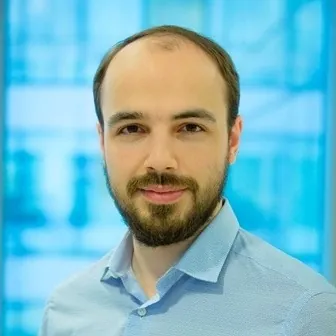 Konstantin is the co-founder and CTO at Youth Laboratories. Konstantin holds a master’s degree in theoretical physics from Lomonosov Moscow State University. He has broad experience in software development in high-load systems, extensive knowledge in machine learning, and big data. Konstantin is an approved instructor at the NVIDIA Deep Learning Institute. Konstantin is the co-founder and CTO at Youth Laboratories. Konstantin holds a master’s degree in theoretical physics from Lomonosov Moscow State University. He has broad experience in software development in high-load systems, extensive knowledge in machine learning, and big data. Konstantin is an approved instructor at the NVIDIA Deep Learning Institute. |
Want to know more?
Visit the MouseAGE website and learn more about the project and how it works. We would also welcome collaboration with people interested in developing our application for other uses so feel free to contact us.

Please help us make MouseAge a reality while getting awesome rewards at the same time! Click any of the pledge rewards below for more information. |



